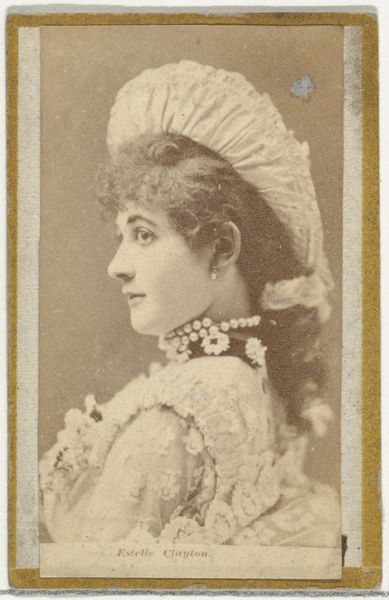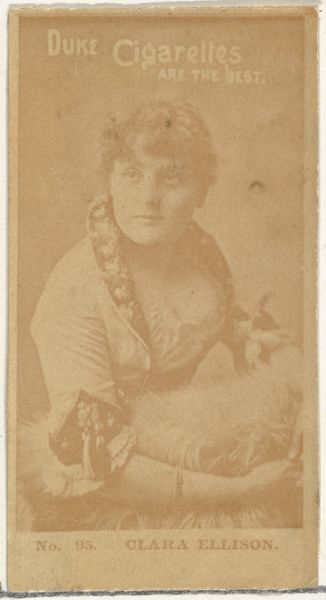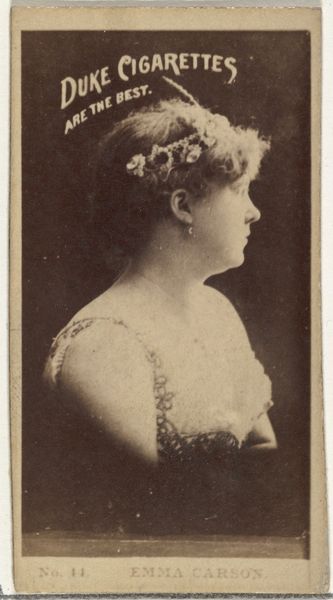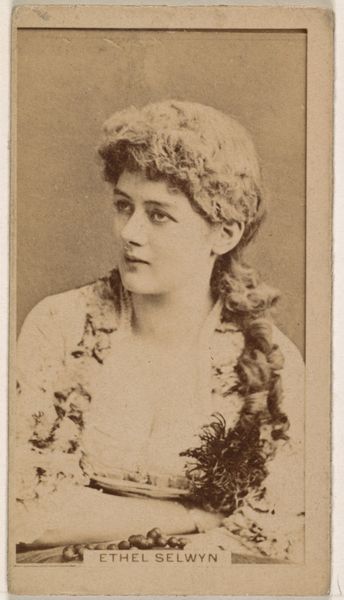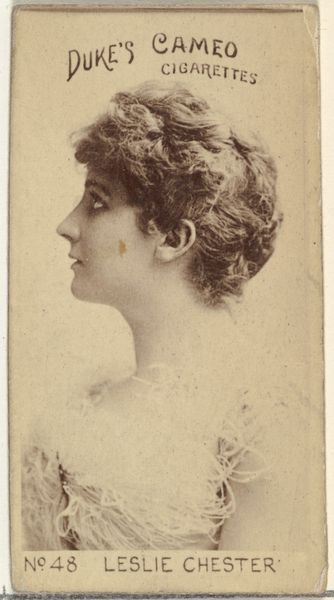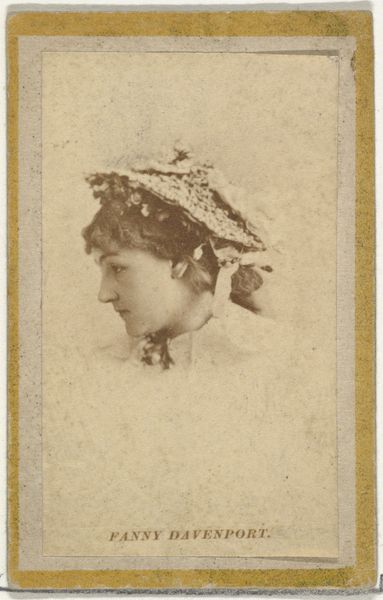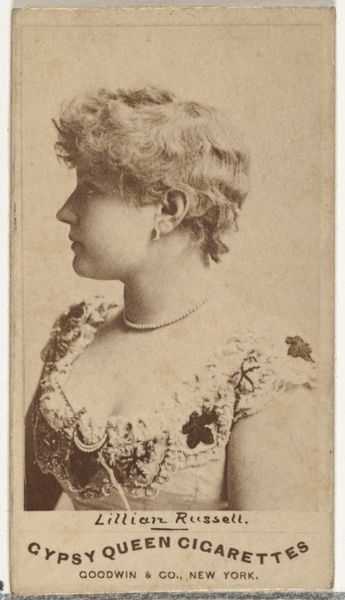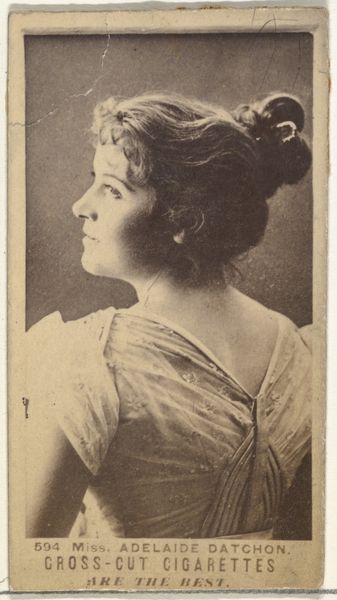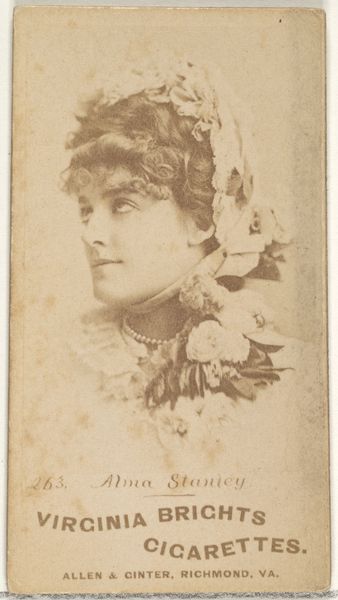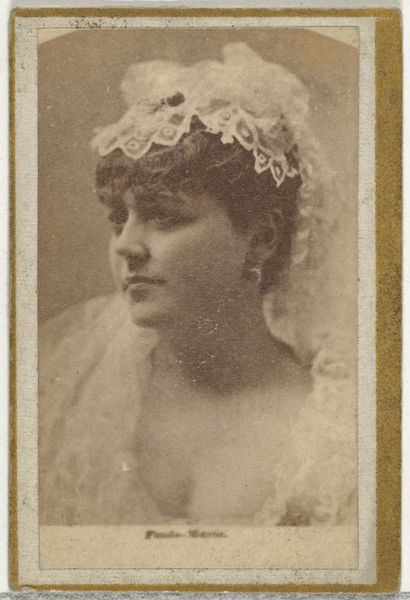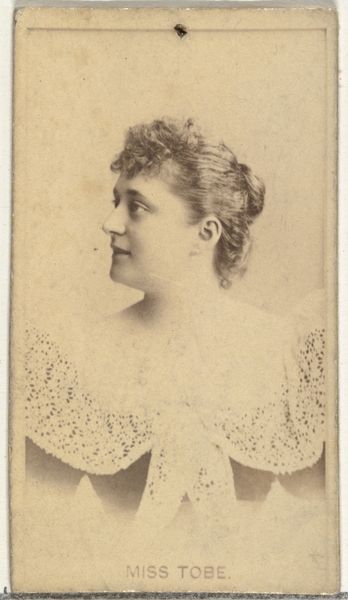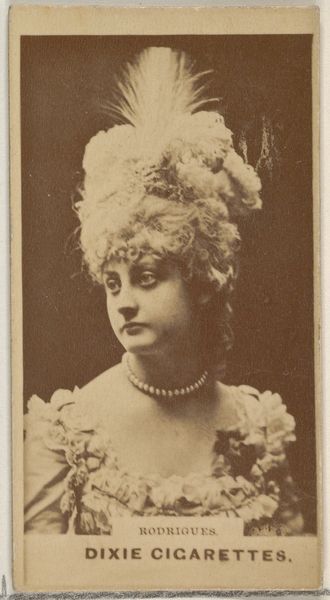
Flora Franks, from the Actresses and Celebrities series (N60, Type 2) promoting Little Beauties Cigarettes for Allen & Ginter brand tobacco products 1887
0:00
0:00
print, photography
#
portrait
# print
#
photography
Dimensions: Sheet: 2 3/8 × 1 1/2 in. (6 × 3.8 cm)
Copyright: Public Domain
Editor: Initially, I’m struck by how this piece reflects both intimacy and commodity. The photographic print is small, like a treasured memento, yet it served as an advertisement. Curator: Indeed. What we're viewing is an 1887 photograph entitled "Flora Franks, from the Actresses and Celebrities series (N60, Type 2) promoting Little Beauties Cigarettes for Allen & Ginter brand tobacco products.” It's a fascinating example of portraiture intended for mass consumption, now residing at the Metropolitan Museum. The tonality emphasizes form, doesn’t it? The light sculpting her profile, the carefully arranged floral ornamentation. Editor: Precisely. It's important to remember it's a promotional item linked to Allen & Ginter, meant to be collected. What was the production and distribution like? Cigarettes then weren't just nicotine delivery devices; the packaging created a cultural context. Curator: Excellent point. This piece uses a relatively straightforward composition. We're focused solely on the actress, posed in profile. There's a limited depth of field, making her attire—that wonderful lace collar, the cascade of flowers—especially striking, visually anchoring the composition and creating depth. The lack of background further enhances this effect, directing the gaze entirely towards the subject. Editor: Yes, the lace! A mass-produced image promoting mass-produced cigarettes, both utilizing labor on a grand scale. To appreciate the aesthetic quality is one thing, but understanding that those objects are not created ex nihilo reframes its presence here in the museum. What choices are made about who gets portrayed on this piece of cigarette ephemera? Curator: You've raised a vital point regarding context, of course, and you're spot-on about it representing something of a cultural artefact that reflects societal values of that period. The profile stance suggests a subtle reserve, or is that just my impression? The sepia tint lends a nostalgic filter. It encapsulates something uniquely 19th century, wouldn’t you agree? Editor: I'm still pondering the materials themselves. We're talking about photographic paper, inks, potentially cheap labor to assemble and distribute this, the very packaging used for cigarettes – ephemeral by design, yet they survive today, forcing us to consider labor practices that helped put them there in the first place. Curator: A thought-provoking reading! So much more to discuss; what better legacy can any piece of art offer than sparking continued interest in this way? Editor: It reframes a piece as being an embodiment of broader socio-economic forces. Both readings enhance our engagement.
Comments
No comments
Be the first to comment and join the conversation on the ultimate creative platform.
